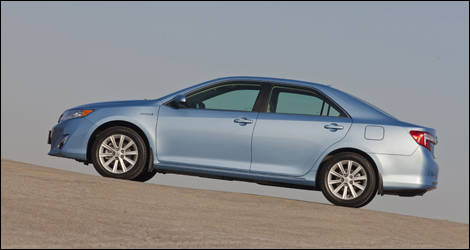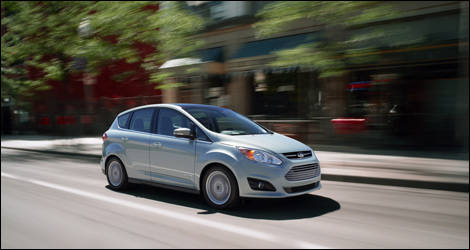If you require autonomy that battery-powered electric vehicles can't provide, you should look towards other green-vehicle solutions before throwing in the towel.
Hybrid vehicle savings
Hybrid vehicles provide definite fuel economy savings when compared to their combustion-engined counterparts. Consider the gas-powered Toyota Camry vs. the hybrid version. While the traditional powertrain drinks 7L/100km, the hybrid drinks just 4.7L/100 km (combined driving for both, according to Toyota). Pricing for the gas-powered Camry starts at $23,700, while the hybrid chimes in at $27,710. That’s a $4,010 price difference, but fear not; you will recover the cash after driving 130,000 km.
Choosing a hybrid will provide long-term savings. The more you drive, the more you save, so they say!
Plug-ins, the best of both worlds… Except for the price
You need to carefully analyze your driving needs before jumping to any conclusions. Will a plug-in hybrid make a difference in your specific case?
I was in for quite a surprise when I decided to nose around the Ford website and compare standard hybrid model prices to their plug-in counterparts. The Ford C-Max plug-in hybrid retails for nearly $10,000 more than the base model! Is it really worth it?
For starters, plug-in hybrids have a 25-35 km battery-only autonomy. In an ideal world, you would travel 25 kilometres to get to your job, plug it in then come home with a full charge. This would be the equivalent of having an electric vehicle, but with the added convenience of extended-range driving for your weekend wanderings.
In reality, average daily commutes are in the 65 km range. Subtract 25 km (for a vehicle that consumes 5L/100km) and you end up saving 1.25 litres of gas per day; at $1.35 per litre you have just pocketed $1.69. If you drive every single day of the year, you will wind up saving $617 annually. You will therefore recoup your initial $10,000 investment after 16 years.
Hybrid vehicle savings
Hybrid vehicles provide definite fuel economy savings when compared to their combustion-engined counterparts. Consider the gas-powered Toyota Camry vs. the hybrid version. While the traditional powertrain drinks 7L/100km, the hybrid drinks just 4.7L/100 km (combined driving for both, according to Toyota). Pricing for the gas-powered Camry starts at $23,700, while the hybrid chimes in at $27,710. That’s a $4,010 price difference, but fear not; you will recover the cash after driving 130,000 km.
Choosing a hybrid will provide long-term savings. The more you drive, the more you save, so they say!
 |
| Toyota Camry Hybrid (Photo: Toyota) |
Plug-ins, the best of both worlds… Except for the price
You need to carefully analyze your driving needs before jumping to any conclusions. Will a plug-in hybrid make a difference in your specific case?
I was in for quite a surprise when I decided to nose around the Ford website and compare standard hybrid model prices to their plug-in counterparts. The Ford C-Max plug-in hybrid retails for nearly $10,000 more than the base model! Is it really worth it?
For starters, plug-in hybrids have a 25-35 km battery-only autonomy. In an ideal world, you would travel 25 kilometres to get to your job, plug it in then come home with a full charge. This would be the equivalent of having an electric vehicle, but with the added convenience of extended-range driving for your weekend wanderings.
 |
| 2013 Ford C-MAX Hybrid (Photo: Ford) |
In reality, average daily commutes are in the 65 km range. Subtract 25 km (for a vehicle that consumes 5L/100km) and you end up saving 1.25 litres of gas per day; at $1.35 per litre you have just pocketed $1.69. If you drive every single day of the year, you will wind up saving $617 annually. You will therefore recoup your initial $10,000 investment after 16 years.





